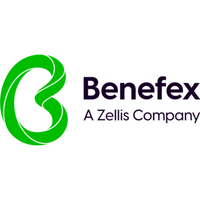Making your benefits work for you: A step-by-step guide

Employee benefits and non-cash reward and recognition are now more important than ever at a time when, according to the Korn Ferry 2021 Global Salary Survey, one in three organisations will be giving salary increases to less than half of their employees, and more than three times as many are planning to skip increases altogether. Getting your employee benefits strategy right can make a huge difference to your business. With spend on benefits averaging 32% of payroll, according to Josh Bersin, it’s essential that your benefits are working for you.
When I first started in benefits some 20-odd years ago, all that was available under an employer benefit arrangement outside of pensions were insurances, additional holiday and the odd lifestyle benefit like wine clubs and retail vouchers. Whilst insurance and holiday remain the most popular benefits with employees, now you can offer pretty much anything – from Will writing and health cash plans to discounted beauty treatments and at-home health checks.
So how do you navigate through these choices to make sure that what you offer continues to be relevant to your business and your people?
Align your reward strategy to your business strategy
If you want to ensure your benefits support your business (and you want to be able to secure budget!) it is imperative that you understand the business strategy and what is required of your people to be able to deliver to that strategy.
Some key questions you need to consider:
- What does the business need to do to achieve its goals?
- What types of people do you need to retain and attract?
- What behaviours do you need to encourage?
- What support will those people need, and which benefits will provide that support?
Wellness appears on pretty much every agenda at the highest level. 95% of employers see employee wellbeing as more important to their organisation than it was five years ago, and 48% cite the link of good employee wellbeing to productivity and performance, our survey of 250 benefits and reward leaders found. As such, reviewing what you offer to support wellbeing is an obvious starting point. From there, you can drill down to ensure you are meeting or exceeding the needs of the population you are most focussed on attracting, retaining and motivating.
Know your employees
You will have a lot of data available to you that tells you the demographic of your employees, what benefits they select, what medical conditions they claim for, whether they engage with your communications, and which are most successful. Now, you’ll almost certainly also know where they prefer to work, and how are they coping with the current environment.
You can use this data to form a more detailed profile of your employees. This information can support your understanding of which benefits are going to attract, retain and motivate the people who are going to drive success for your business. If there are gaps in data, look at how to fill that gap. The more data you have, the better, and the easier it is to make and demonstrate an impact. And if you don’t know which benefits your people would most value – ask them!
Decide which benefits to offer
Once you know what you need to achieve, who your target audience is and what is going to motivate them, you are ready to tailor your benefits offering to maximise your return on investment.
Although it is important that your benefits are diverse and inclusive, offering too much choice can be overwhelming. If you are clear in your strategy and objectives and you know your employees, it is easy to see which benefits are right for your organisation.
It’s all about employee experience
Looking at benefits as part of the wider employee experience is crucial if you want to get the most out of your benefits spend. Ensuring information is easily accessible, the user journey is enjoyable, looks good and seamlessly links to related systems, will provide an enhanced employee experience and give you a better payback on your benefits spend.
Now you’ve got the right benefits, and you’ve looked at the employee experience, make sure employees know about it! A communications plan that supports your strategy will make a huge difference to the success of your benefits. Aon’s Benefit Strategy Survey 2021 found that communicating to employees is the top challenge for benefits schemes, which I do actually find surprising given the support and tools available.
Our communications manager has certainly made a significant difference to many of our customers, and allows them to easily send targeted emails throughout the year on any topic, in fact, our work with a large pharmaceuticals company received an award nomination for their communications! Read the case study.
We have already seen a big shift in attitudes, behaviours and expectations in the workplace, and that is only going to continue. Reviewing your benefits strategy will ensure you hit the mark for your people and your business.
The author is Charlotte Godley, head of proposition, Benefex.
This article is provided by Benefex.
In partnership with Benefex
The home of award-winning employee benefits, reward, recognition, & communications.







